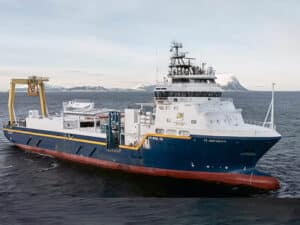
PowerBuoy on sea trials as part of coastal surveillance system
Written by Wave energy technology pioneer Ocean Power Technologies, Inc. reports that one of its PowerBuoy autonomous wave energy devices has been deployed for sea trials as part of a U.S. Navy coastal security and maritime surveillance program.
Wave energy technology pioneer Ocean Power Technologies, Inc. reports that one of its PowerBuoy autonomous wave energy devices has been deployed for sea trials as part of a U.S. Navy coastal security and maritime surveillance program.
This PowerBuoy, which has been designed and manufactured by OPT under the Navy’s Littoral Expeditionary Autonomous PowerBuoy (LEAP) program is significantly smaller and more compact than the company’s standard utility. Incorporating a unique power take-off and on-board energy storage system, it provides persistent, off-grid clean energy in remote ocean locations for a wide variety of maritime security and monitoring applications.
Under the LEAP program, OPT has integrated its autonomous PowerBuoy with radar network and communications infrastructure from Rutgers University’s Institute of Marine and Coastal Sciences in partnership with CODAR Ocean Sensors. This PowerBuoy provides power at the lower levels needed for a sophisticated vessel detection and tracking system, enabling maritime surveillance in the near coast, harbors and littoral zones worldwide. Mikros Systems Corporation provided data and systems architecture support for the PowerBuoy/radar network.
Currently, systems requiring remote power at sea are often powered by diesel generators, which need frequent maintenance and fuel replenishment. The LEAP PowerBuoy system was developed by OPT to provide constant power in all wave conditions for the sea-based radar and communications system. The company’s proprietary power management techniques and on-board energy storage capability are key innovations of the system, and enable operation even in extended zero-wave sea conditions. In addition, the system has been engineered to require no maintenance for three years.
“This is a significant achievement for Ocean Power Technologies in the development and commercialization of its technology,” said OPT’s CEO, Charles F. Dunleavy. “Today’s news marks the deployment of our first grid-independent, autonomous PowerBuoy for the LEAP program and is an exciting step forward for our product line focused on remote ocean applications.”
The Navy, he noted, “is our first customer in an attractive market for our technology in national security applications and in industries for which power is needed offshore.”
The LEAP system was deployed on August 11, 2011 by a US Coast Guard vessel and will be ocean-tested approximately 20 miles off the coast of New Jersey. It will be integrated with the Rutgers University-operated, land-based radar network that provides ocean current mapping data for the National Oceanographic and Atmospheric Administration (NOAA) and U.S. Coast Guard search and rescue operations. The ocean test of the LEAP vessel detection system will thus demonstrate dual-use capability of the radar network and verify OPT’s technology as a persistent power source for systems requiring remote power at sea.
August 22, 2011





Leave a Reply
You must be logged in to post a comment.